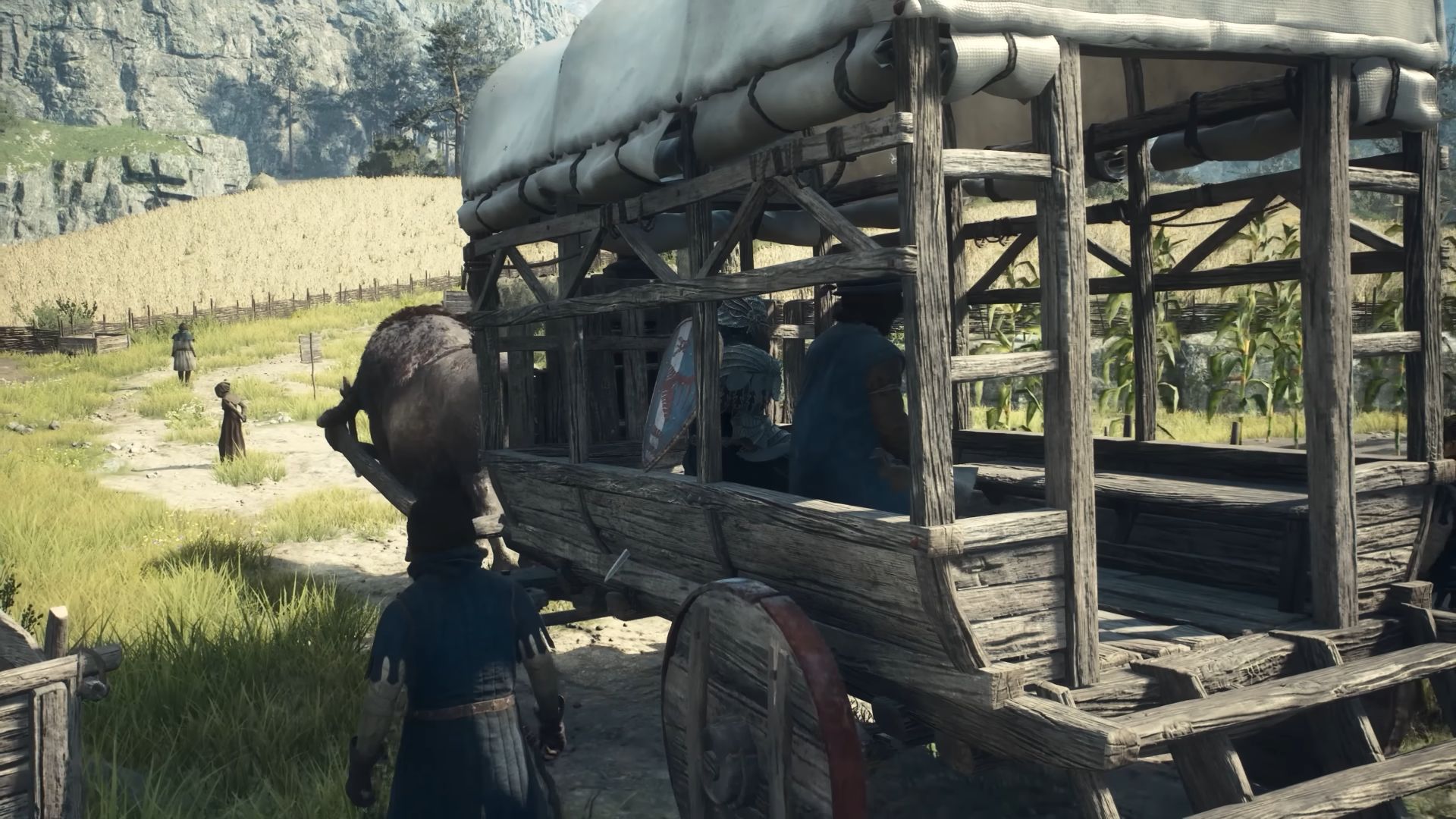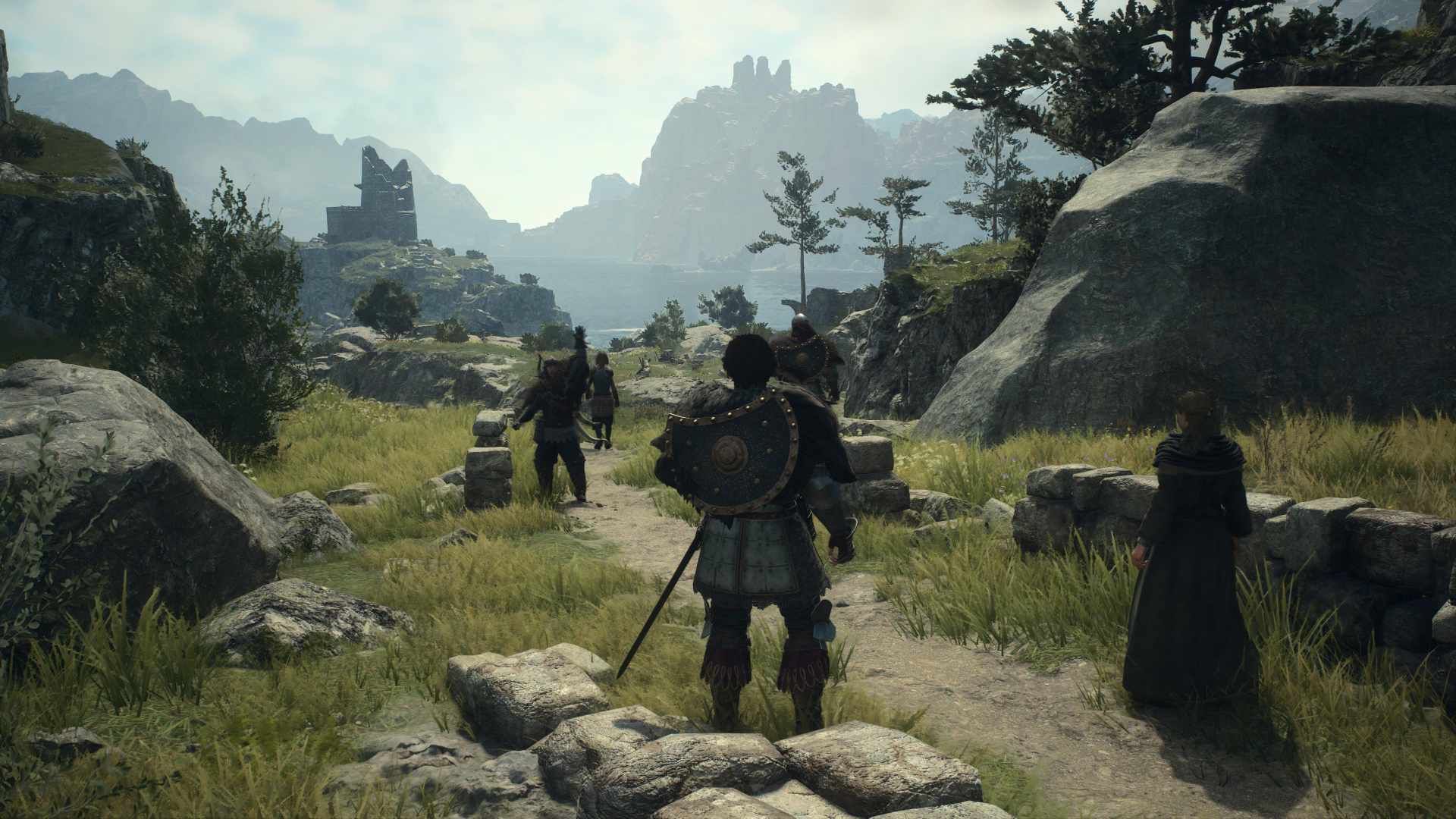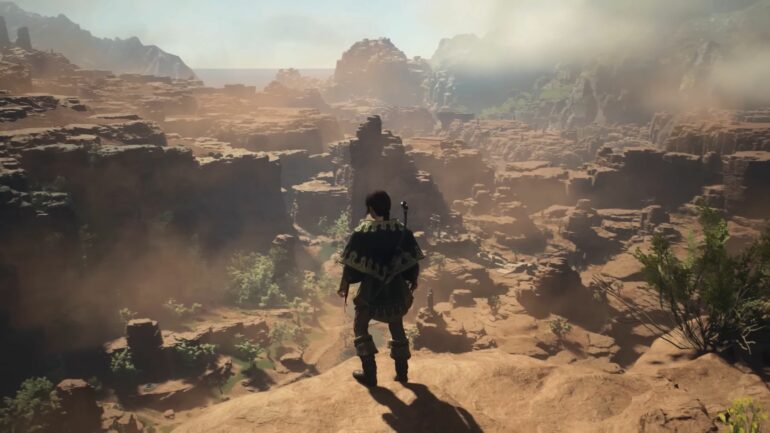I love immersion in video games. It grounds us in these phenomenal and fantastical worlds and lets us truly appreciate all the little details. There’s nothing worse than unrealistically sprinting through a city (seriously, who runs everywhere in real life?) with map makers and a busy UI distracting us from the ridiculous amount of detail the developers have put into these enormous game worlds. Dragon’s Dogma 2, in all its glory, understands this. It wants nothing more than to completely and utterly immerse you in its world, get you to see every cave, tree, goblin, and glowing bug, and make you really feel like you’re a part of its history. This is why, much to many players’ chagrin, its fast travel options are so limited, it has an absurd weight limit requirement that makes you slow walk everywhere like a turtle, and its stamina system is pretty awful.
Dragon’s Dogma 2’s Fast Travel Is the Best
For those of you who don’t know, Dragon’s Dogma 2 has three main ways to fast travel. The first is to hop on the back of an Ox Cart and “doze off,” which essentially sees you go from one location to the next instantly. However, there’s a catch. Firstly, you have to manually get to an Ox Cart bell in order to summon one. Secondly, that Ox Cart has a 90% chance of getting ambushed and destroyed on its way, which leaves you having to walk the rest of your way anyway.
The other option is to use a Ferrystone, which allows you to teleport to any Portcrystals you’ve unlocked. However, Ferrystones are expensive and in limited supply, so this is reserved for when you’ve really got to get to where you’re going.

For many players, specifically the people who didn’t enjoy the 10-minute-long skin-peeling animations in Red Dead Redemption 2, this will likely sound like a nightmare. However, and here’s the kicker, not only do I think that Dragon’s Dogma 2’s limited fast travel options are amazing, but I also believe it should also be the standard for all open world games going forward.
Why People Are Fast to Fast Travel
Fast travel exists purely for player convenience. It adds no real storytelling or worldbuilding value or, indeed, any value beyond the ability to go from point A to B in a flash. With the advent of faster loading times, fast travel has very much become a crutch in which players not only rely upon, but expect. So, when games like Dragon’s Dogma 2 come out, players begin to get agitated when they cannot simply just zoom back to a location they’d previously visited, you know, without the hassle of battling a Griffin that destroyed their only mode of transport on the way.
In fact, one of the very first guides I did for Dragon’s Dogma 2 post-release was on the game’s limited fast travel options. It was quite literally one of the most trending topics on day one. Now, of course, not everyone sees the virtues of fast travel. However, it’s easy to see why so many rely on it. Games, more specifically, let’s be honest, Ubisoft games, have struggled with making their worlds genuinely interesting to explore. Players need a reason to go from point A to B because otherwise, travel may as well be reduced to a fade-to-black loading screen.

So, these worlds are filled to the brim with busy work, tasks that are supposed to grab your attention as you bound across forests, fields, cities, and other locales. However, I suspect that this has failed to work for many, as a lot of open-world games are criticized for their lack of meaningful open-world content. When faced with boring side quests and a lifeless world, players are forced to contend with the only fun activity left to them: the story. The quickest way of completing it? Fast traveling everywhere.
Dragon’s Dogma 2 Cares About Its Open World
Here’s the thing. Dragon’s Dogma 2’s main story isn’t particularly good. So, what you’re left with is its side content. Few other games tend to fit into this category outside of maybe Soulslikes (I understand the story is all in the lore, but no one is playing those games specifically for the narrative, right?). The only other notable example is Skyrim, and while many may debate its narrative merits, it is more fondly remembered for its engaging open world and not for all that chosen-one malarky.
I suspect that Capcom knew the story wasn’t good or at least understood that it’s not why people play Dragon’s Dogma. That’s why it spent a considerable amount of time ensuring that the journey from one main mission to the other was so enjoyable. For example, the journey from Melve, the game’s first settlement, to Vernworth, the first major city, should only take you around 5 to 10 minutes, depending on how much iron ore you have in your backpack.

However, you could easily take upwards of an hour if you allow yourself to venture off the beaten path. In my first playthrough, I spent two hours going from Melve to Vernworth before finally arriving with an impressive amount of gear, tens of thousands in gold, and having practically already maxed out my first Vocation. That’s because Dragon’s Dogma 2 really cares about its world and what you do in it. It doesn’t want it to feel empty and meaningless, merely a place through which you move, but rather somewhere you exist, somewhere you want to explore. Perhaps what many don’t realize is that it doesn’t want you to travel so you can get from point A to point B. It wants you to travel so you can see everything in between.
No Fast Travel Means You Actually Travel
Were fast travel to exist within Dragon’s Dogma 2, the experience would be ruined. Having that convenience would remove the curiosity that comes with being forced to manually trudge down the beaten path, the awe that comes from realizing just how big this world is, the excitement that comes from uncovering its secrets, and the relief that comes from finally making it home.
It is perhaps that final point, the sigh of relief as you return to safety with only a sliver of health left, that makes no fast travel so worthwhile. Were you able to fast travel away from danger, or the moment you ran out of curatives, you would miss out on the beautiful tension that comes from weighing up whether to venture into a potentially lucrative cave or continue your journey back home.

Traveling Creatively
However, it’s only possible if fast travel doesn’t exist, or at least only in a limited capacity. Removing this feature from development may also encourage developers to think creatively about what players will see when exploring. It removes that crutch that allows developers to fill the world with mindless content or simply nothing at all, as players can simply fast travel to the next interesting thing if they desire.
Additionally, incorporating fast travel in an immersive way, such as Dragon’s Dogma 2 did with its Ox Carts that can actually be stopped, introduces an element of emergent gameplay that makes the mere act of a loading screen an exhilaratingly dangerous prospect. No matter how you do it, limiting the convenience of tired gameplay systems leads to innovation as you’re forced to think out of the box and give players something unexpected.

So, if you’ve put Dragon’s Dogma 2 down or are thinking of skipping it because it doesn’t have fast travel, remember that the whole point is to travel, to go on an adventure, your companions by your side, face tough adversities, uncover untold riches, and then return to your soft bed to dream of not what you’ll do next, but where you’ll go.
What do you think about Dragon’s Dogma 2’s fast travel? Let us know in the comments below. For more articles just like this one, be sure to check out our Guide Hub.











